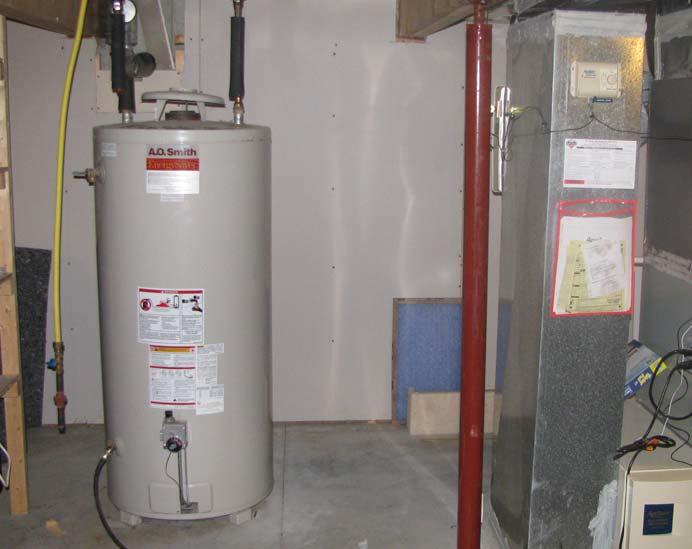What to Care for Your Home's Hot Water System EffectivelyKey Maintenance Tips for Your Home's Hot Water System
What to Care for Your Home's Hot Water System EffectivelyKey Maintenance Tips for Your Home's Hot Water System
Blog Article
We have unearthed this great article pertaining to How to Maintain a Hot Water Heater in a Few Simple Steps listed below on the net and think it made sense to talk about it with you here.

Warm water is necessary for daily convenience, whether it's for a rejuvenating shower or washing recipes. To guarantee your hot water system runs successfully and lasts longer, normal upkeep is essential. This write-up offers sensible tips and insights on just how to preserve your home's hot water system to stay clear of disruptions and pricey repair services.
Introduction
Keeping your home's hot water system could appear difficult, yet with a few basic actions, you can guarantee it operates efficiently for several years to come. This overview covers every little thing from understanding your warm water system to DIY maintenance pointers and knowing when to employ specialist help.
Importance of Preserving Your Warm Water System
Normal maintenance not only expands the lifespan of your hot water system however additionally guarantees it operates effectively. Neglecting maintenance can cause lowered performance, higher energy costs, and also early failing of the system.
Indicators Your Warm Water System Demands Upkeep
Recognizing when your warm water system requires interest can avoid major problems. Look out for signs such as irregular water temperature level, unusual noises from the heating system, or rusty water.
Purging the Hot Water Heater
Purging your water heater removes sediment buildup, improving performance and lengthening its life.
Monitoring and Replacing Anode Rods
Anode poles protect against rust inside the tank. Inspecting and changing them when worn out is crucial.
Complex Issues Requiring Specialist Aid
Instances include major leakages, electric issues, or if your water heater is consistently underperforming.
Regular Professional Upkeep Perks
Expert maintenance can consist of complete evaluations, tune-ups, and making sure compliance with security standards.
Evaluating and Adjusting Temperature Setups
Adjusting the temperature level settings makes certain optimal efficiency and safety and security.
DIY Tips for Upkeep
You can carry out numerous upkeep tasks on your own to keep your warm water system in leading condition.
Looking for Leaks
Consistently inspect pipes and links for leaks, as these can lead to water damages and higher expenses.
Understanding Your Warm Water System
Before diving right into maintenance jobs, it's practical to recognize the fundamental components of your warm water system. Normally, this includes the water heater itself, pipelines, anode rods, and temperature controls.
Month-to-month Upkeep Tasks
Regular regular monthly checks can assist catch small problems before they rise.
Checking Pressure Alleviation Valves
Evaluating the pressure safety valve guarantees it works properly and avoids excessive stress build-up.
Protecting Pipes
Protecting warm water pipelines decreases heat loss and can conserve energy.
When to Call a Professional
While do it yourself maintenance is useful, some problems require professional proficiency.
Conclusion
Regular upkeep of your home's warm water system is necessary for effectiveness, longevity, and expense savings. By following these pointers and recognizing when to look for expert help, you can guarantee a dependable supply of hot water without unanticipated disturbances.
How to Maintain an Instant Hot Water Heater
Before tinkering with your hot water heater, make sure that it’s not powered on. You also have to turn off the main circuit breaker and shut off the main gas line to prevent accidents. Also turn off the water valves connected to your unit to prevent water from flowing into and out of the appliance. 2. When you’re done, you have to detach the purge valves’ caps. These look like the letter “T” and are situated on either side of the water valves. Doing so will release any pressure that has accumulated inside the valves while at the same time avoid hot water from shooting out and burning your skin. 3. When the purge valves’ caps are removed, you have to connect your hosing lines to the valves. Your unit should have come with three hoses but if it didn’t, you can purchase these things from any hardware or home repair shops. You can also get them from retail stores that sell water heating systems. Read the user’s manual and follow it to complete this task properly. When the hosing lines are connected, open the purge port’s valves. 4. You should never use harsh chemical cleaners or solutions when cleaning your unit. Make use of white vinegar instead. It should be undiluted and you’ll probably use about 2 gallons. 5. Now flush your water heater. This task should probably take about 40 minutes. We can’t give you specific directions for this because the procedure is carried out depending on the type, model and brand of your heater. With that being said, refer to the user’s manual. 6. When you’re done draining the unit, you have to turn off the purge port valves again. Remove the hosing lines that you earlier installed on each of the water valves. Put the valve caps (purge port) back in their respective places and be very careful so as not to damage the rubber discs that are found inside these caps. 7. Now that everything’s back in place, check your user’s manual again to find out how to reactivate your water heating system. 8. Once it is working, turn one of your hot water faucets on just to let air pass through the heater’s water supply pipes. Leave the tap on until water flows smoothly out of it. https://www.orrplumbing.com/blog/2014/september/how-to-maintain-an-instant-hot-water-heater/

I recently found that entry about How to Maintain a Hot Water Heater in a Few Simple Steps while perusing the web. In case you liked our page if you please be sure to pass it around. I praise you for being here. Revisit us soon.
Click On This Link Report this page